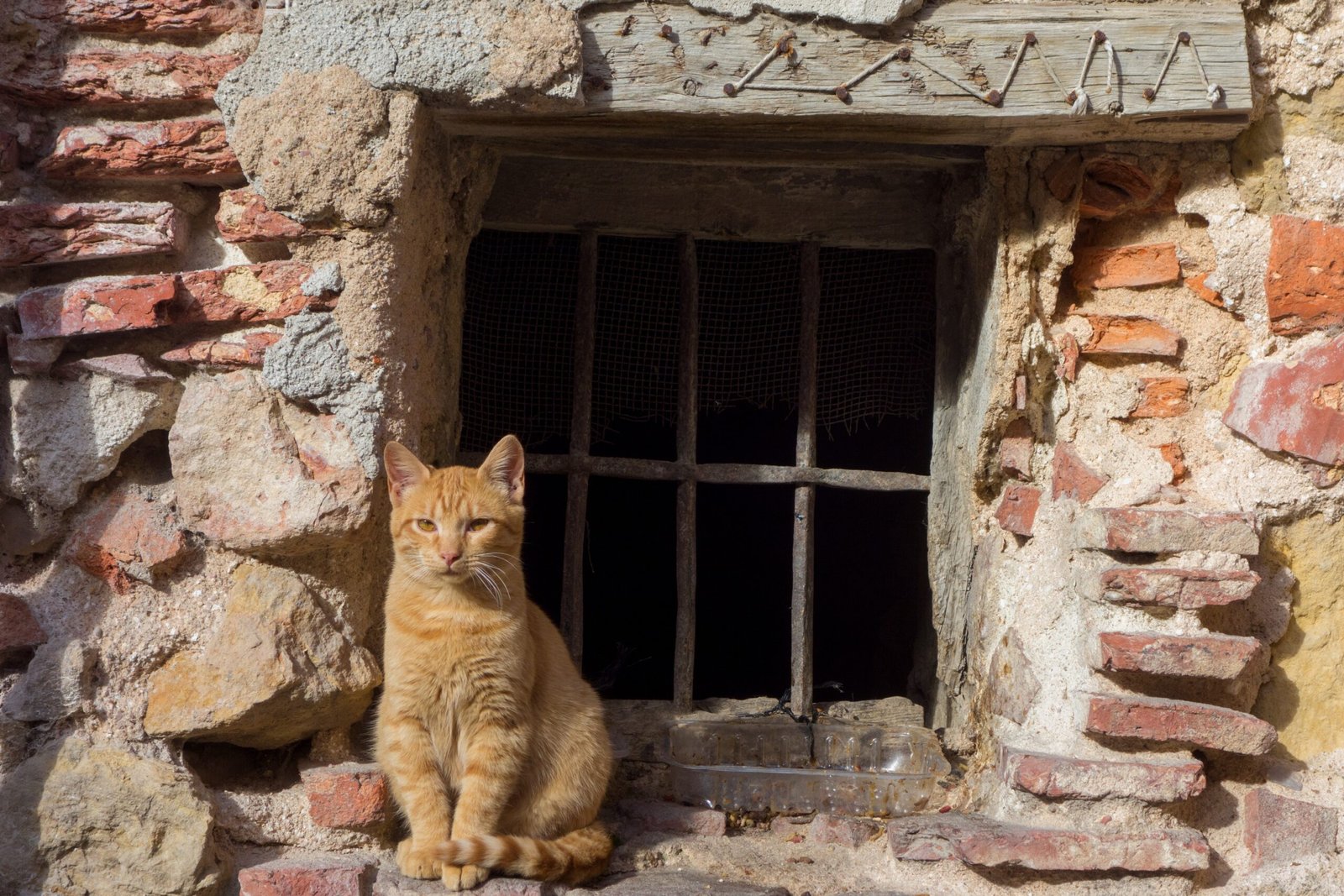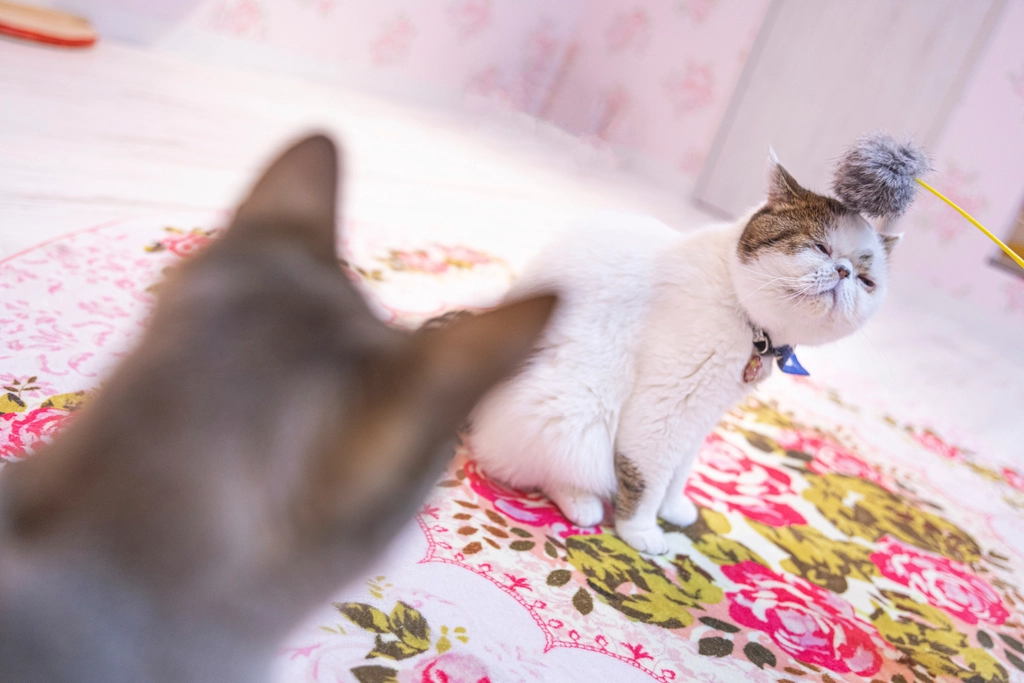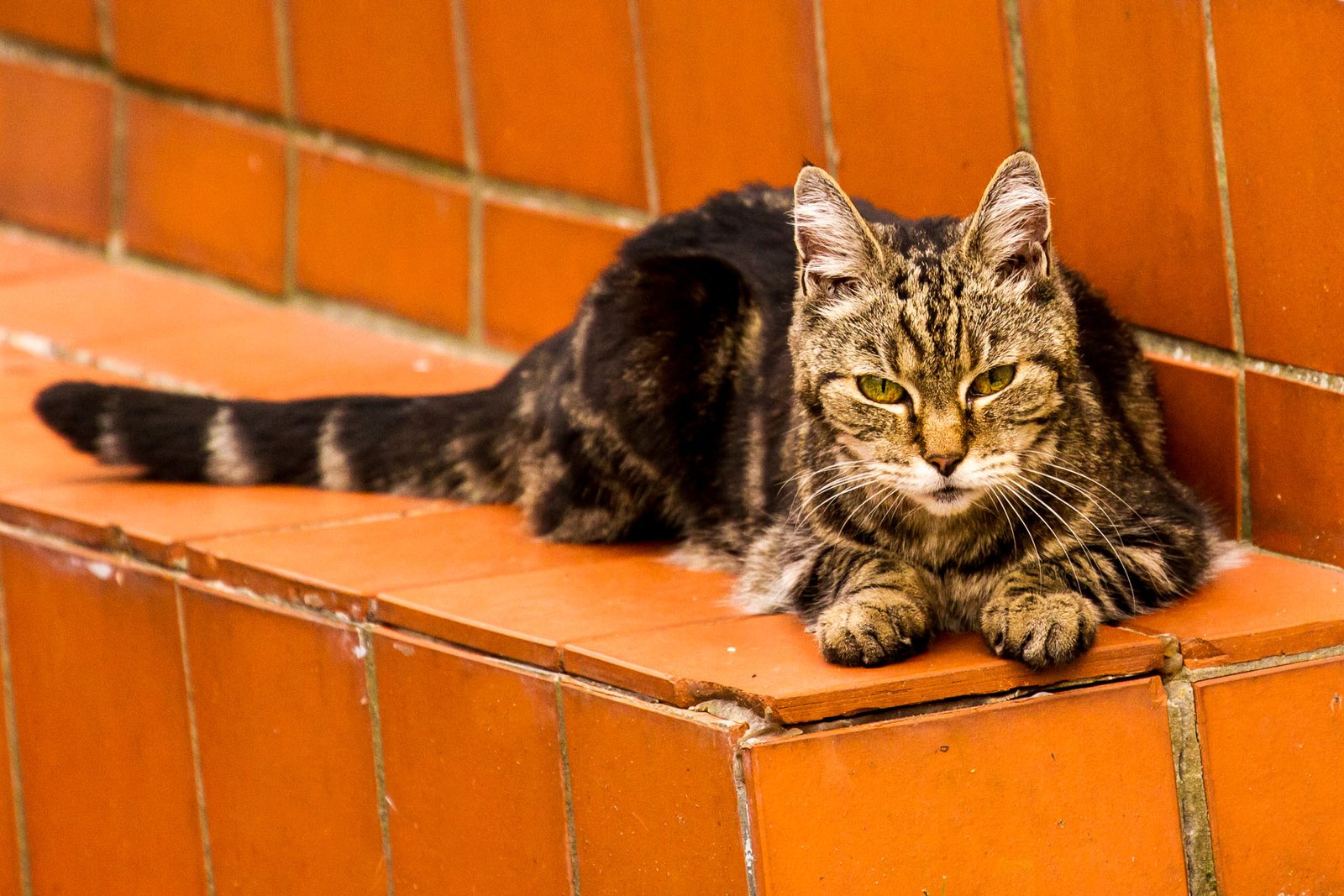Have you ever seen your cat act out of sorts, hiding more than usual or suddenly losing interest in playtime? It’s heartbreaking to witness your furry friend go through emotional changes—especially when you don’t know how to help. Cats, just like humans, experience shifts in their emotions due to changes in their environment, family dynamics, or even health. The good news is that with kindness, patience, and a little know-how, you can make a huge difference in your cat’s emotional well-being. Let’s dive into the world of feline feelings and explore how you can be your cat’s greatest support through tough times.
Recognizing Emotional Changes in Your Cat

Cats are famously mysterious, but they do show signs when something is amiss. You may notice your cat withdrawing, becoming unusually vocal, or even showing aggression. Sometimes, changes are subtle—maybe your cat isn’t eating as much or is sleeping in odd places. These signs can mean your cat is coping with stress, grief, or anxiety. Watch for changes in grooming habits, litter box usage, or any sudden behavior shifts. By tuning into these clues, you can start to uncover what your cat is feeling and respond accordingly. Recognizing these early signals is the first step toward helping your cat through emotional change.
Identifying the Cause of Emotional Upset

Understanding the root of your cat’s emotional shift is crucial. Has there been a recent move, a new pet, or a change in your household routine? Even small changes, like rearranging furniture or a different feeding schedule, can affect sensitive cats. Sometimes, the cause is less obvious, such as loud noises from nearby construction or a change in your own mood. Take time to reflect on recent changes in your home or your life. Discuss any concerns with family members, as they may have noticed something you missed. Pinpointing the cause allows you to better address your cat’s needs and offer the right support.
Creating a Safe and Calm Environment

Cats thrive in stable, predictable surroundings. When your cat is emotionally unsettled, providing a safe and calm environment is essential. Set up a quiet space where your cat can retreat, away from noise and disruption. Use soft bedding, familiar toys, and maybe even a piece of your clothing to offer comfort. Keep the room at a comfortable temperature and ensure your cat has access to food, water, and a clean litter box. Try to minimize changes in this space while your cat is adjusting. A calm environment offers sanctuary and helps your cat regain a sense of security.
Offering Consistency in Routine

Routine is a cat’s best friend during times of emotional upheaval. Feeding, playtime, and cuddles should happen at the same time each day. If you need to change something, do it gradually to avoid overwhelming your pet. Consistent routines help cats feel safe, as they know what to expect. Try not to introduce too many new things or people during this period. If you must, bring in changes slowly and with lots of reassurance. Your unwavering presence and predictability become an anchor for your cat during uncertain times.
Respecting Your Cat’s Boundaries

It can be tempting to scoop up your cat and shower them with affection when they seem down. However, some cats need space when they’re processing emotions. Watch your cat’s body language—if they pull away, flatten their ears, or swish their tail, it’s best to give them room. Offer affection on your cat’s terms, letting them approach you when they’re ready. Sometimes, just sitting nearby can be enough. Respecting boundaries helps rebuild trust and encourages your cat to seek comfort from you when they need it most.
Using Play to Relieve Stress

Playtime isn’t just fun—it’s therapy for cats! Interactive games, like feather wands or laser pointers, can distract your cat from stress and help release pent-up anxiety. Try setting aside dedicated play sessions each day, even if they’re short. Rotate toys to keep things interesting and encourage your cat’s natural hunting instincts. If your cat isn’t interested in playing, don’t force it—sometimes just watching you move a toy is enough to spark curiosity. Play is a powerful way to lift your cat’s spirits and remind them that life can still be joyful.
Introducing Comforting Scents and Sounds

Cats are incredibly sensitive to smells and sounds. Familiar scents, like your own clothing or pheromone sprays designed for cats, can be calming. Soft music or white noise can help drown out scary or unfamiliar sounds. Consider placing a blanket that smells like home in your cat’s favorite spot. You can also use feline pheromone diffusers, which mimic the calming scents cats leave when they rub their faces on surfaces. These little touches make your cat feel more at home and less anxious during emotional changes.
Providing Extra Attention and Affection

During emotional upheaval, your cat may crave more attention—or less. Pay close attention to their cues and respond with gentle affection. Soft petting, slow blinking (a sign of trust in cat language), and soothing words can all provide reassurance. If your cat likes being brushed, this can be a calming bonding activity. Remember, affection doesn’t always mean physical touch—sometimes, your calm presence is enough. By offering love and patience, you show your cat they’re not alone, no matter what they’re feeling.
Addressing Changes in Appetite and Eating Habits

Stress and emotional change often affect a cat’s eating habits. Some cats lose their appetite, while others may overeat. Monitor your cat’s food and water intake closely. Offer favorite foods or warm up wet food to make it more appealing. Avoid drastic changes in diet, as this can add to your cat’s stress. If your cat refuses to eat for more than 24 hours, contact your vet—cats can develop serious health issues quickly without food. Supporting healthy eating helps your cat regain strength and balance.
Monitoring for Physical Symptoms

Emotional stress can sometimes show up as physical symptoms in cats. Watch for vomiting, diarrhea, excessive grooming, or sudden weight loss. These could be signs your cat is struggling emotionally or may have an underlying health issue. Keep a diary of any changes you notice and share them with your veterinarian. Early detection makes it easier to address both emotional and physical health. Remember, your cat can’t tell you what’s wrong, so your observations are vital in getting them the help they need.
Seeking Veterinary Advice When Needed

If your cat’s emotional changes persist, it’s time to consult with your veterinarian. Sometimes, what appears to be emotional distress is actually a medical issue. Your vet can rule out illnesses, offer advice on supporting your cat emotionally, and recommend treatments if necessary. Don’t hesitate to ask questions—vets are there to help both you and your cat. Early intervention can prevent small issues from becoming big problems. Never feel embarrassed about seeking help; it shows how much you care about your cat’s wellbeing.
Helping Cats Cope with Loss or Grief

Cats can grieve the loss of a companion animal or even a human family member. Signs of feline grief include searching for the lost companion, vocalizing, or withdrawing. Keep routines as normal as possible and offer extra comfort. Let your cat see and sniff any items belonging to the lost companion if this seems to help. Avoid rushing to introduce a new pet; give your cat time to adjust. Grief is a process for cats, just as it is for us, and your patience is the greatest gift you can offer.
Managing Multi-Cat Household Changes

Introducing a new cat or losing a feline friend can shake up your cat’s world. Monitor interactions closely and offer separate spaces if tensions rise. Use pheromone sprays or diffusers to reduce stress. Gradually reintroduce cats if there is conflict, using treats and positive reinforcement. Ensure each cat has their own food bowls, litter boxes, and resting spots. Multi-cat households can be harmonious, but it takes patience and understanding to help everyone adjust to emotional shifts.
Supporting Cats During Moves and Travel

Moving homes or traveling can be particularly stressful for cats. Before the move, introduce your cat to their carrier and let them explore it. On moving day, keep your cat in a quiet room with familiar items until you’re ready to transport them. In your new home, set up a dedicated safe space before letting your cat explore. Gradually introduce them to new rooms and routines. Patience and a calm demeanor will reassure your cat that, even though the surroundings are new, your love remains the same.
Helping Cats Adjust to New Family Members

Whether it’s a new baby, partner, or roommate, new faces can unsettle your cat. Allow your cat to approach new people at their own pace. Ask visitors to be calm and quiet, letting your cat sniff and observe from a distance. Offer treats and praise for calm interactions. Keep routines steady and provide extra attention so your cat feels secure. With time and gentle introductions, most cats will accept new family members into their circle.
Understanding Age-Related Emotional Changes

As cats age, they may become more sensitive to change or experience cognitive decline. Older cats might seem confused or anxious in new situations. Keep their environment predictable and avoid moving their belongings. Offer soft bedding and easy access to food, water, and litter boxes. Talk to your vet about supplements or medications that may help with age-related anxiety. Most importantly, shower your senior cat with love and patience—they’ve earned it.
Using Positive Reinforcement and Treats

Rewarding your cat for calm, positive behavior during emotional changes can work wonders. Use treats, praise, or a favorite toy to reinforce good moments. If your cat bravely explores a new room or interacts gently, celebrate these victories. Avoid punishment or scolding, which can increase anxiety. Positive reinforcement builds your cat’s confidence and helps them cope with change in a healthy way. Like children, cats respond best to encouragement and gentle guidance.
Recognizing When to Give Space

Sometimes, the best thing you can do for your cat is simply give them space. If your cat hides under the bed or retreats to a quiet corner, resist the urge to coax them out. Leave their safe spot undisturbed and check in periodically with soft words or treats nearby. Trust that your cat knows what they need and will return when they’re ready. Respecting their need for solitude is a powerful way to show love and understanding during emotional shifts.
Building Trust Through Gentle Interaction

Trust is the foundation of any strong bond with your cat, especially during times of emotional change. Spend quiet moments together, talking softly or reading aloud. Offer treats from your hand or gently stroke your cat’s head if they’re receptive. Be patient—trust grows slowly, like a garden tended with care. Celebrate small steps, like your cat choosing to sit beside you or purring during petting. These moments are victories in your journey together.
Staying Patient and Hopeful Through Change

Emotional changes can take weeks or even months for cats to work through. It’s easy to feel discouraged if progress is slow or setbacks occur. Remember, your cat is doing their best to adapt, and your patience is their greatest comfort. Keep routines steady, offer love and understanding, and believe that brighter days are ahead. With your support, your cat can weather any emotional storm and rediscover their playful, loving self.
Celebrating Progress, No Matter How Small

Every sign of improvement is worth celebrating, whether it’s a tentative head-bump or a curious peek out from a hiding spot. Acknowledge these milestones with gentle praise, treats, or extra cuddle time. Progress can be slow and sometimes uneven, but each positive step is proof of your cat’s resilience—and your dedication as their guardian. Stay hopeful and keep cheering your cat on. After all, isn’t every small victory with your feline friend a reminder of how strong your bond truly is?
Hi, I’m Bola, a passionate writer and creative strategist with a knack for crafting compelling content that educates, inspires, and connects. Over the years, I’ve honed my skills across various writing fields, including content creation, copywriting, online course development, and video scriptwriting.
When I’m not at my desk, you’ll find me exploring new ideas, reading books, or brainstorming creative ways to solve challenges. I believe that words have the power to transform, and I’m here to help you leverage that power for success.
Thanks for stopping by, Keep coming to this website to checkout new articles form me. You’d always love it!






